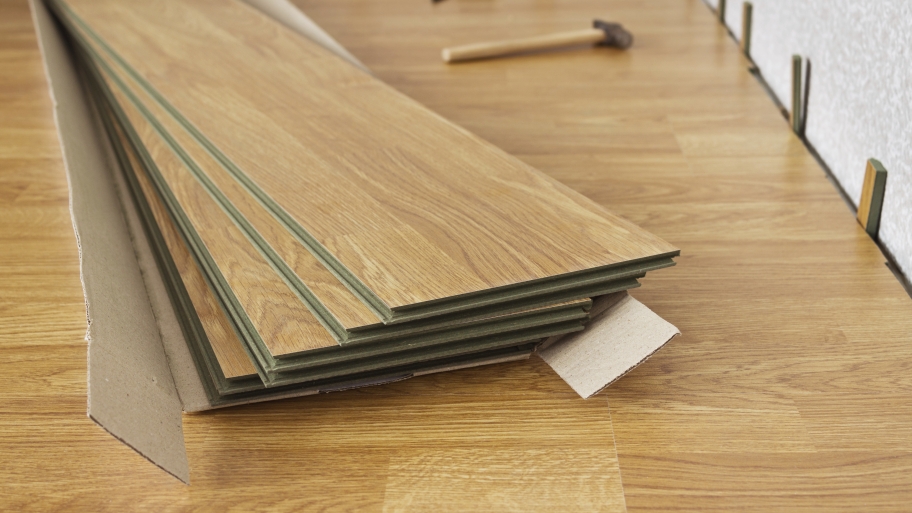Should You Be Concerned About Formaldehyde in Laminate Flooring?
By Cynthia Wilson | Angie’s List

Do you love the look of your laminate wood flooring, but worry it’s a health hazard? You’re not alone.
The Environmental Protection Agency, along with some other state health agencies, is examining formaldehyde content in composite wood flooring to set guidelines for emission standards. The agency says it will release new rules later this year.
Currently, the best information consumers have to guide them when buying composite wood products are standards set by the California Air Resources Board (CARB). The state’s clean air agency requires certain laminate products to comply with its standards limiting formaldehyde emissions. There are no formaldehyde emissions standards for the laminate product itself.
A number of studies have found elevated levels of formaldehyde emissions in homes. However, most consumers weren’t concerned about potential exposure to the cancer-causing chemical from composite wood flooring until “60 minutes” reported its investigations found elevated levels of formaldehyde in some laminate wood flooring imported from China that was sold by discount flooring retailer Lumber Liquidators.
The company disputes the report and says its flooring is safe. It has also offered to pay to test the air quality in the homes of customers who purchased the product.
The EPA says consumers who have laminate flooring in their homes shouldn’t necessarily be concerned because formaldehyde is present in many consumer products, including cabinets, wall finishes and it’s released when consumers use their gas stoves and wood burning fireplaces.
Nonetheless, following these tips from the EPA and health care experts can help you guard your home and health against formaldehyde emissions.
Understand the health risks
According to the Consumer Product and Safety Commission, formaldehyde is a colorless reactive gas used in many consumer products including hair and fingernail products, flooring and furniture. Acute exposure to formaldehyde can cause coughing, wheezing, and asthma-like symptoms, says Dr. Genevieve Brauning, a family practitioner with Novant Health in Charlotte, North Carolina.
She says long-term exposure to low levels would be most likely to cause asthma-like respiratory problems or skin rash. “There are rarer reports that long-term, low-level exposure can cause headaches, fatigue, and changes in sleep patterns,” Brauning says.
Don’t ignore symptoms
Eye, nose and throat irritation are common ailments among allergy sufferers. But these symptoms may signal exposure to formaldehyde.
If the symptoms are new to you and you believe exposure to formaldehyde is causing these or other respiratory problems, Brauning says to avoid the area for a few days and see if the symptoms resolve.
“This does not necessarily mean that allergy-like symptoms are from formaldehyde, she says. “However, you may look at allergens, including formaldehyde in your home. If you stay at your friend’s house down the street and you feel totally better, it would be less likely from seasonal allergies or spring trees blooming.”
Know when exposure risks are highest
Laminate flooring that is a hardwood plywood, or is made by attaching a wood veneer with formaldehyde-based resin to a composite wood platform, are subject to the EPA’s proposed regulations.
People who make products containing formaldehyde or use the products regularly in their work are more vulnerable to overexposure. That’s why more regulation exists for businesses that work regularly with formaldehyde-based products.
The EPA says formaldehyde emissions are highest when products are new. Because emissions dissipate over time, the agency says the older the floor installation, for example, the lower the levels of formaldehyde it will likely emit.
Buy with care
Environmental health experts say it behooves you to know what’s in the product you use in and around your home to lower your exposure to hazards like formaldehyde, lead and asbestos.
Until the national formaldehyde emissions standards for composite flooring are issued, the EPA recommends you look for products that are labeled or stamped in compliance with CARB’s Airborne Toxic Control Measure (ATCM) or those that meet American National Standards Institute (ANSI) standards.
Air it out
It’s hard to avoid bringing any formaldehyde-based products into your home. However, you’re less likely to get skin, nose, throat and lung irritation if you have less concentration of it in your air, Brauning says.
“Having good ventilation or using a mask can be helpful. People should remember that many people tolerate low levels, such as brief exposure to nail polish, without any symptoms at all,” she says.